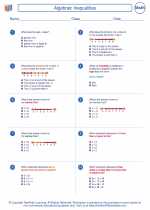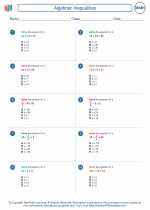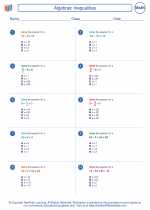Conclusion in Mathematics
In mathematics, a conclusion refers to the final part of a mathematical argument or proof. It is the part where you summarize and present the results or solution to the problem you have been working on. A well-written conclusion should clearly and logically follow from the statements and reasoning that have been presented earlier in the argument or proof.
Key Points to Remember:
- Logical Deduction: The conclusion in mathematics is based on logical deduction from the given premises, definitions, and previously proven theorems or results.
- Summarization: The conclusion should provide a concise summary of the main points of the argument or proof, leading to the final result or solution.
- Clarity: It is important to state the conclusion clearly and unambiguously, so that the reader can understand the outcome of the mathematical reasoning.
- Restating the Problem: Sometimes, it is helpful to restate the original problem or question in the conclusion, followed by the obtained solution or answer.
- Connection to Real-world Applications: In certain mathematical problems, it may be beneficial to discuss the real-world implications or applications of the obtained conclusion.
Study Guide:
When working on mathematical problems that require a conclusion, here are some steps to guide you through the process:
- Understand the Problem: Read the problem carefully and make sure you understand what is being asked. Identify the given information and what needs to be proven or solved.
- Plan Your Approach: Determine the logical steps and mathematical techniques needed to reach the conclusion. Consider any relevant theorems, definitions, or strategies that can be applied.
- Work Through the Problem: Show your work clearly, step by step, as you progress towards the conclusion. Use proper notation and mathematical language to explain your reasoning.
- Check Your Solution: Once you believe you have reached a conclusion, review your work to ensure that the logic is sound and the solution is correct. Look for any errors or inconsistencies.
- Write the Conclusion: Clearly state the conclusion, summarizing the main findings and presenting the solution or result. Make sure the conclusion follows logically from the work you have shown.
- Reflect on the Solution: Consider whether the conclusion makes sense in the context of the original problem. Think about any extensions or related questions that may arise from the conclusion.
By following these steps and keeping the key points in mind, you can effectively formulate and present a solid conclusion in your mathematical work.
.◂Math Worksheets and Study Guides Seventh Grade. Algebraic Inequalities
Study Guide Algebraic Inequalities
Algebraic Inequalities  Worksheet/Answer key
Worksheet/Answer key Algebraic Inequalities
Algebraic Inequalities  Worksheet/Answer key
Worksheet/Answer key Algebraic Inequalities
Algebraic Inequalities  Worksheet/Answer key
Worksheet/Answer key Algebraic Inequalities
Algebraic Inequalities 

 Worksheet/Answer key
Worksheet/Answer key
 Worksheet/Answer key
Worksheet/Answer key
 Worksheet/Answer key
Worksheet/Answer key

The resources above cover the following skills:
Algebra (NCTM)
Represent and analyze mathematical situations and structures using algebraic symbols.
Use symbolic algebra to represent situations and to solve problems, especially those that involve linear relationships.